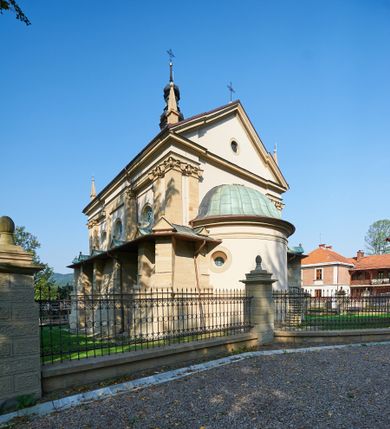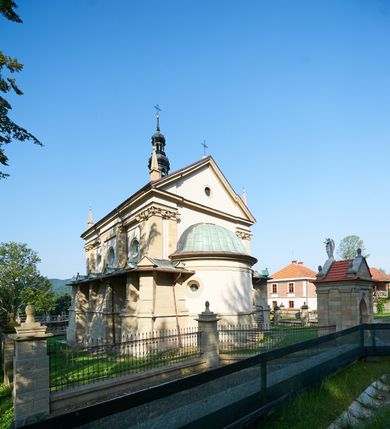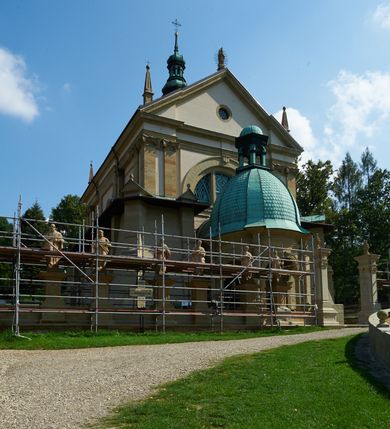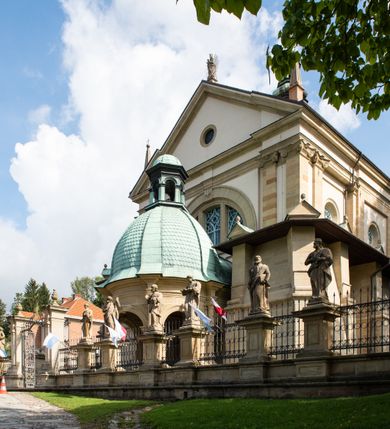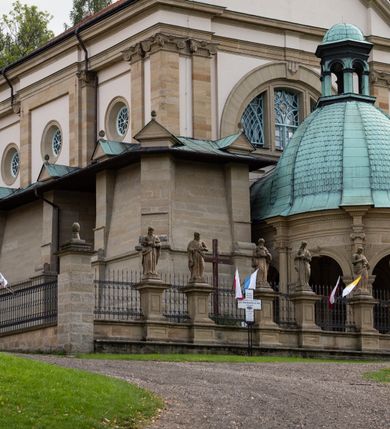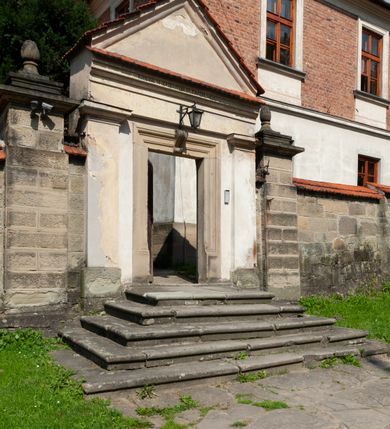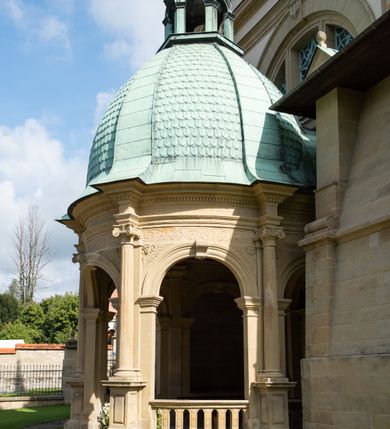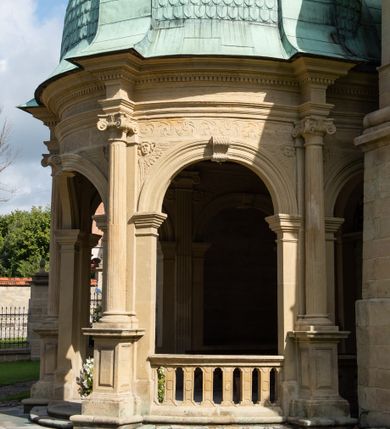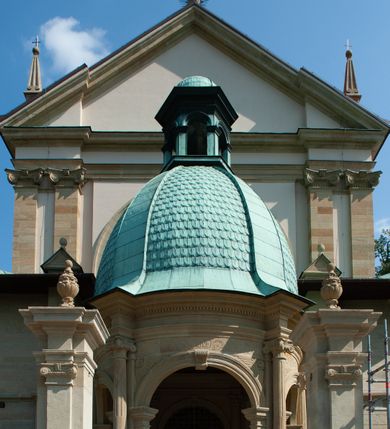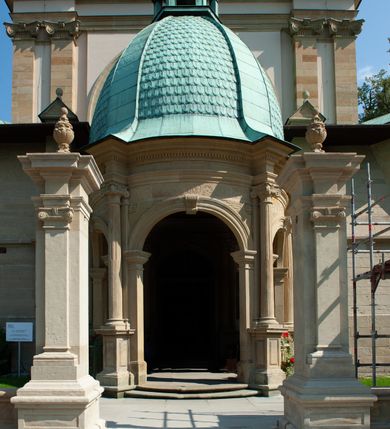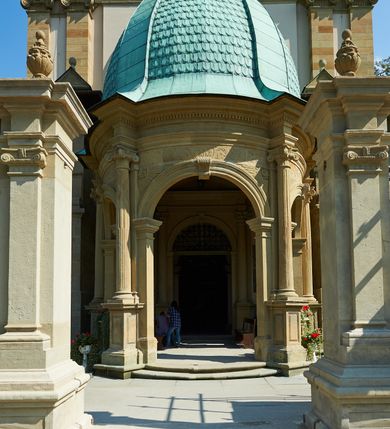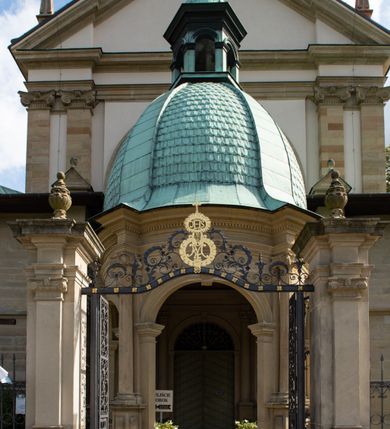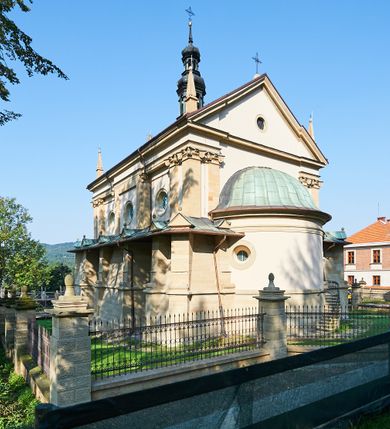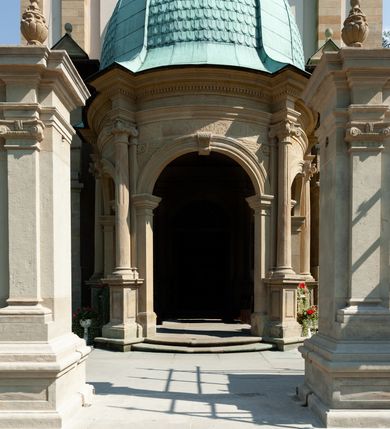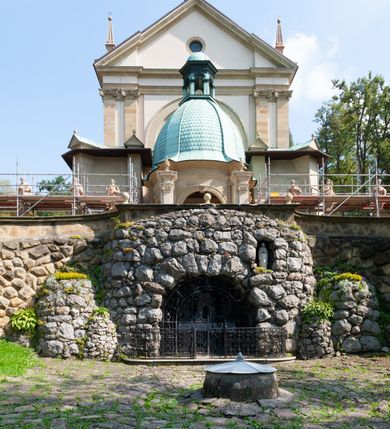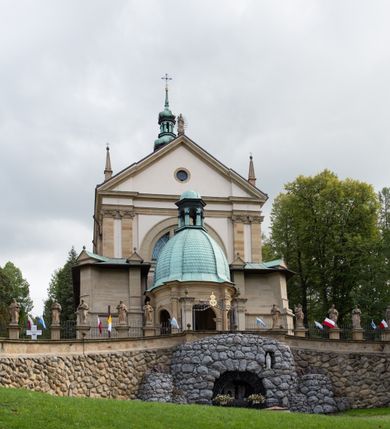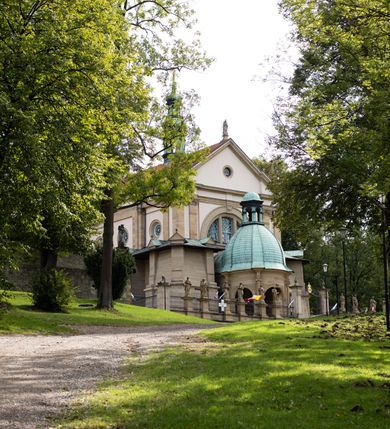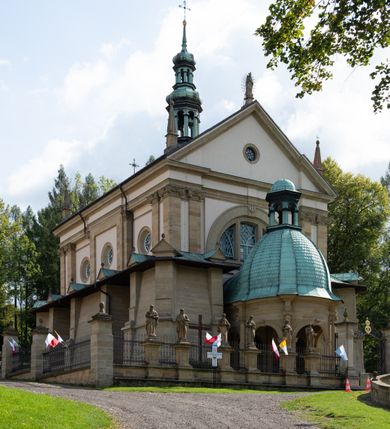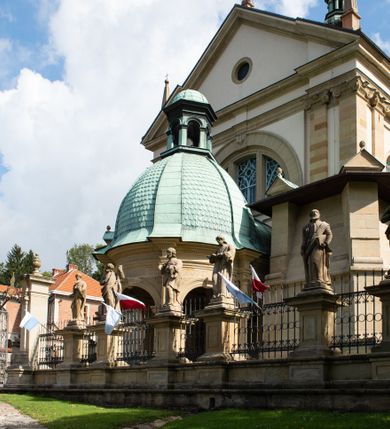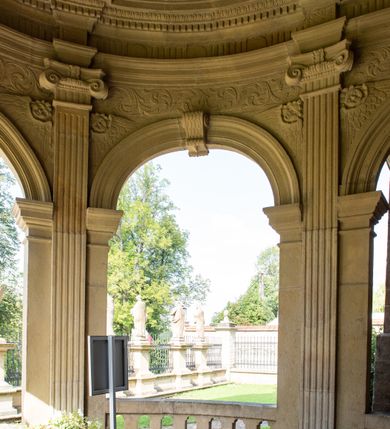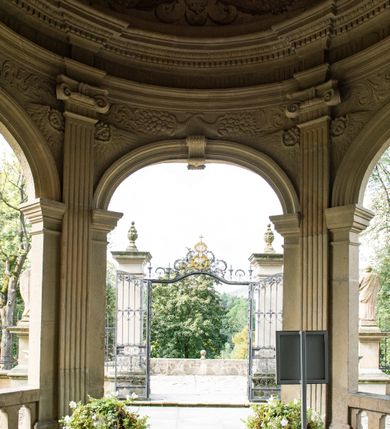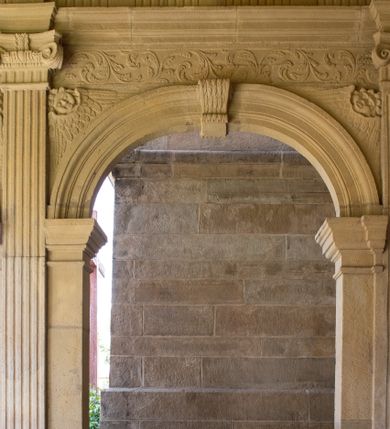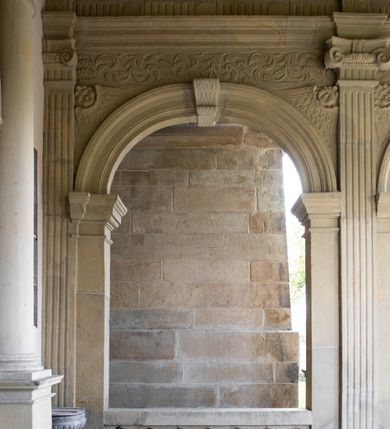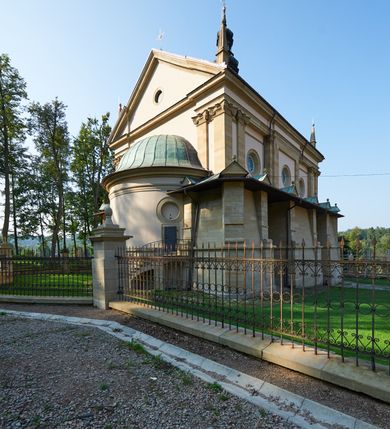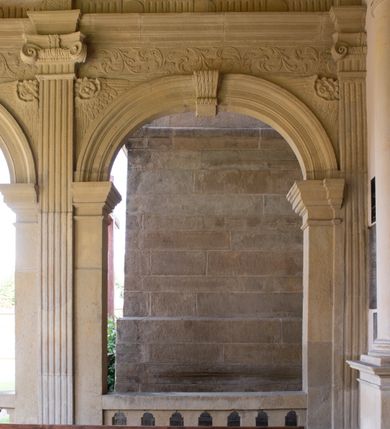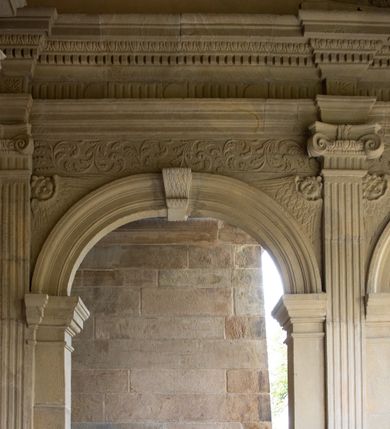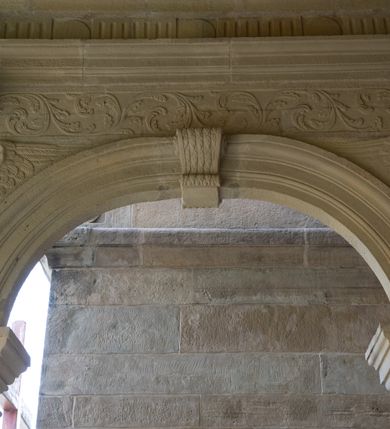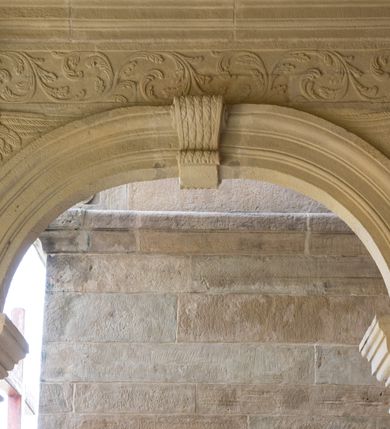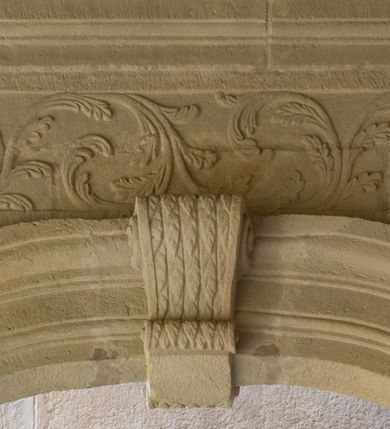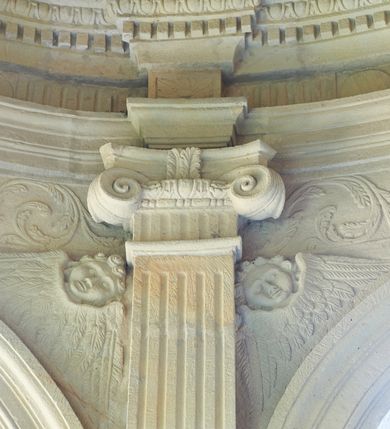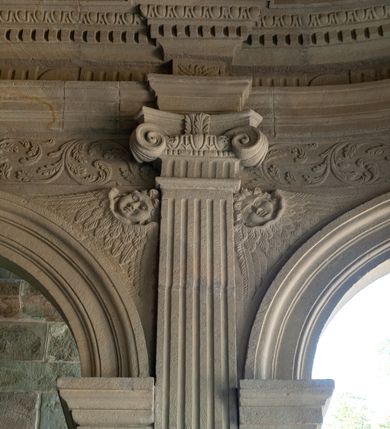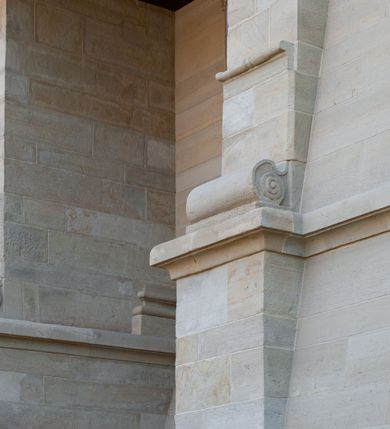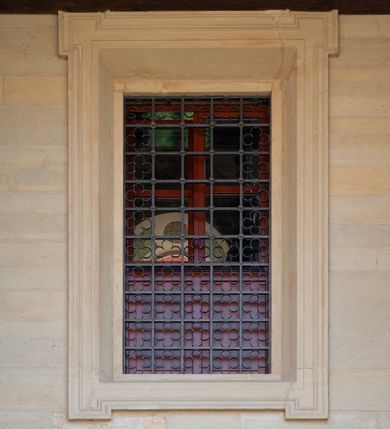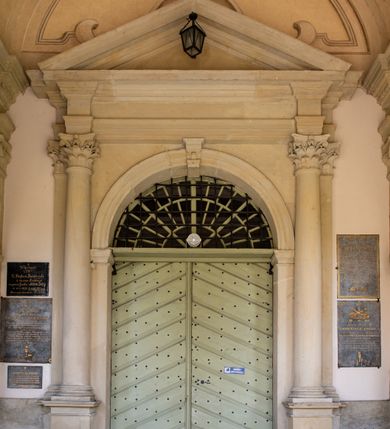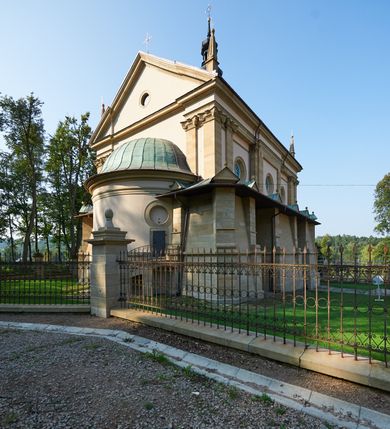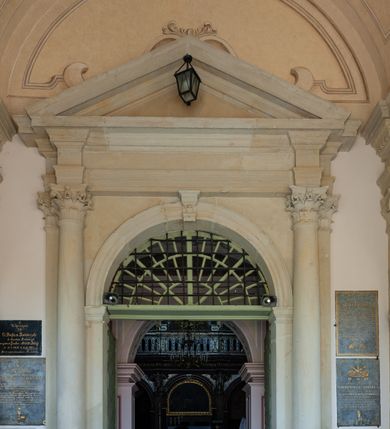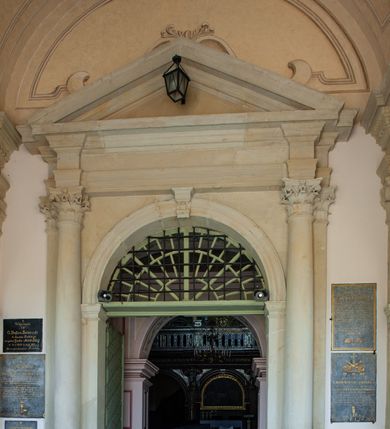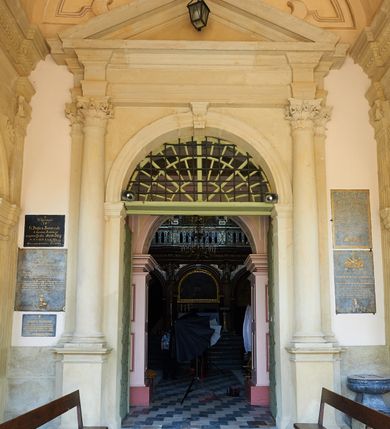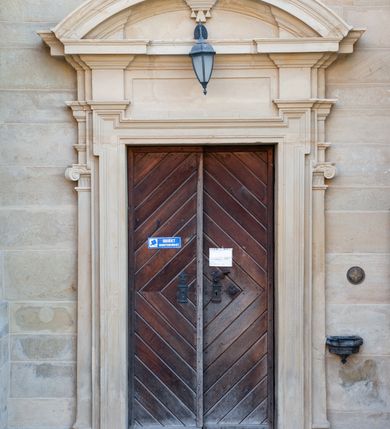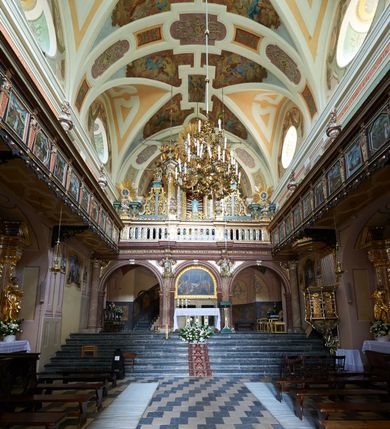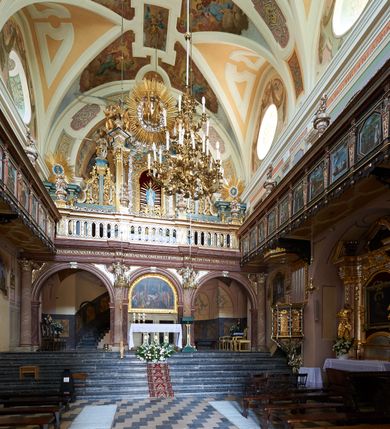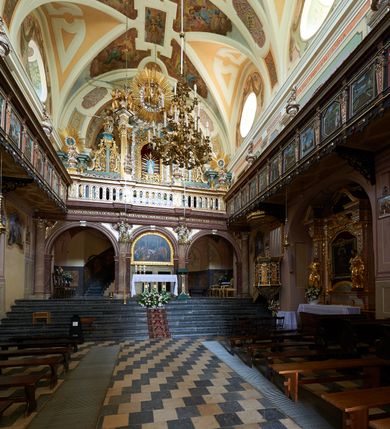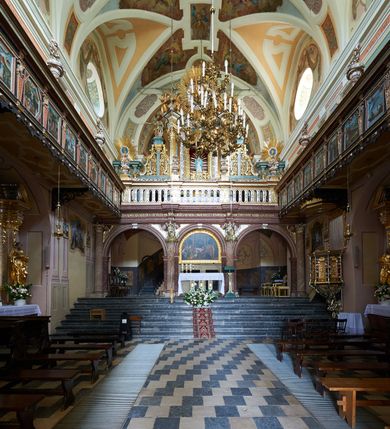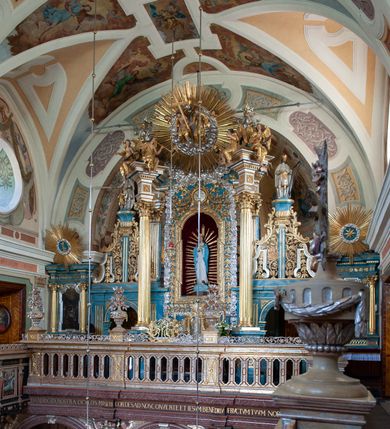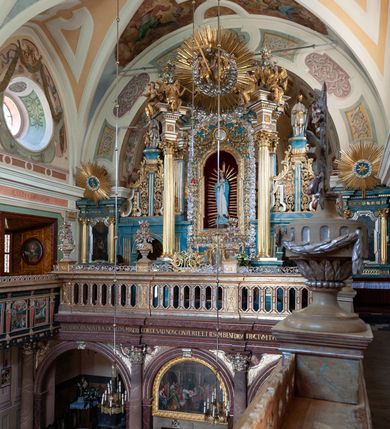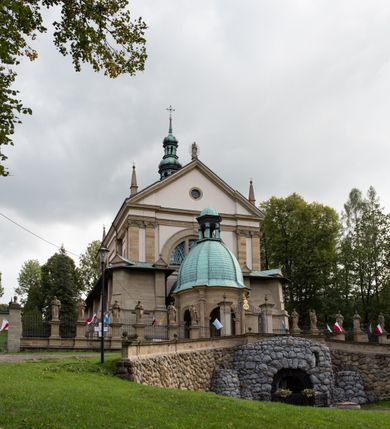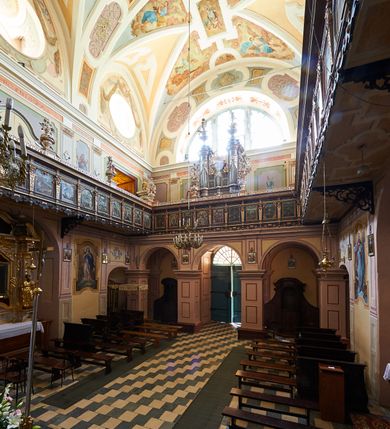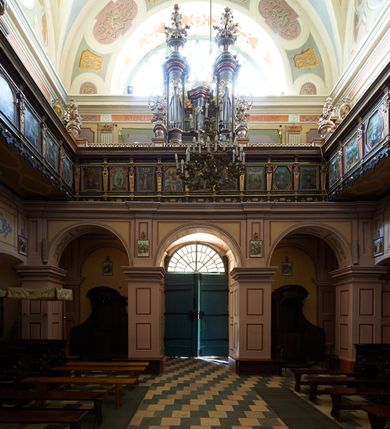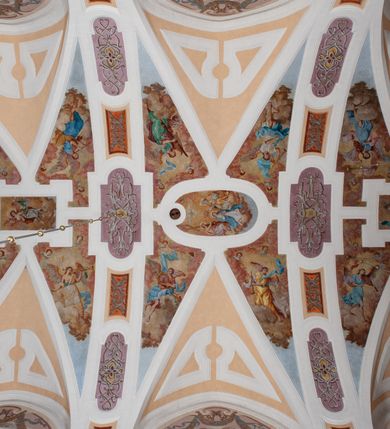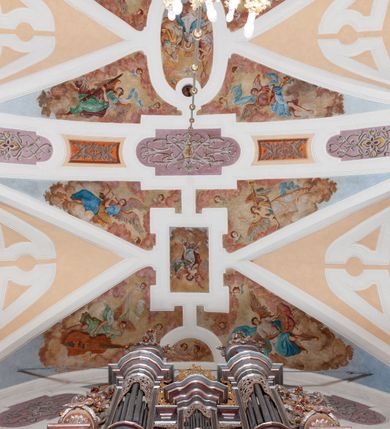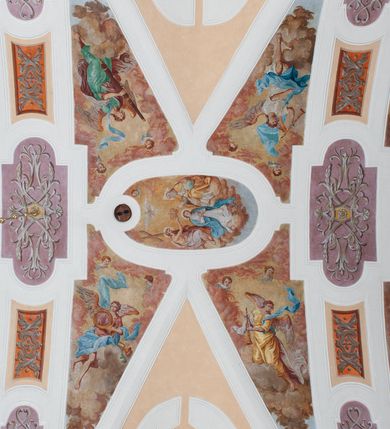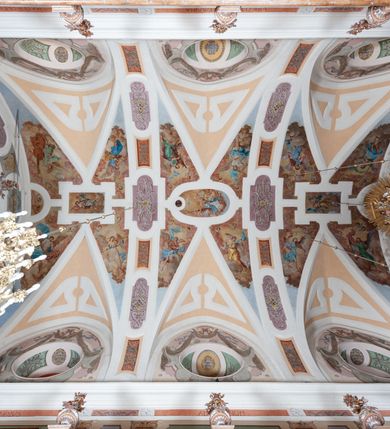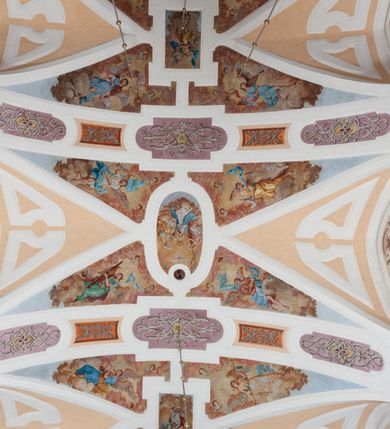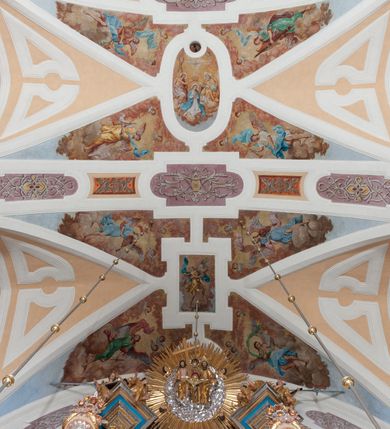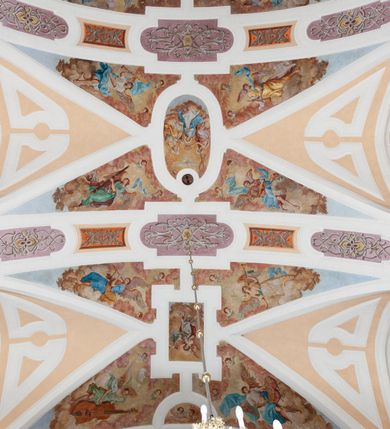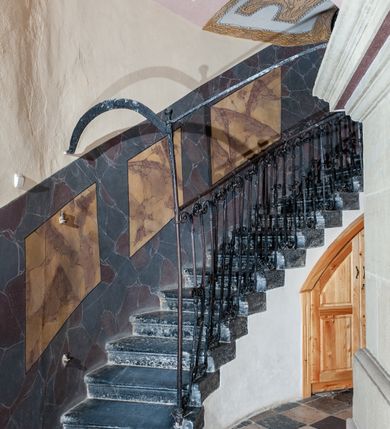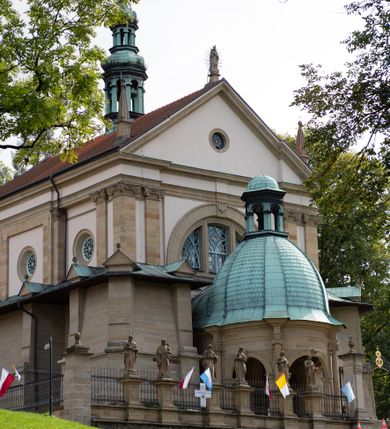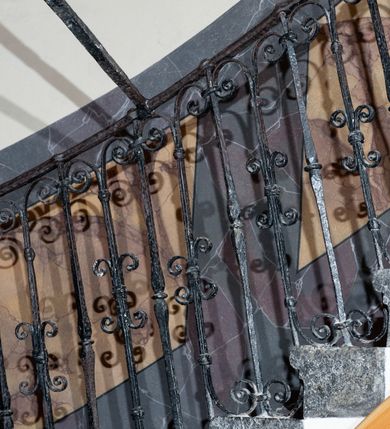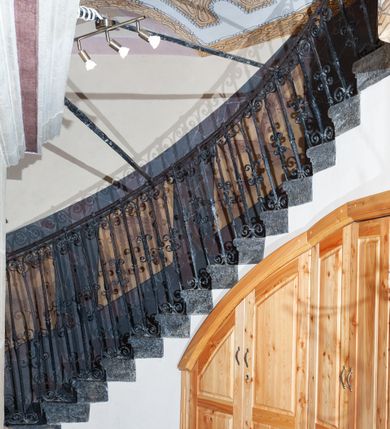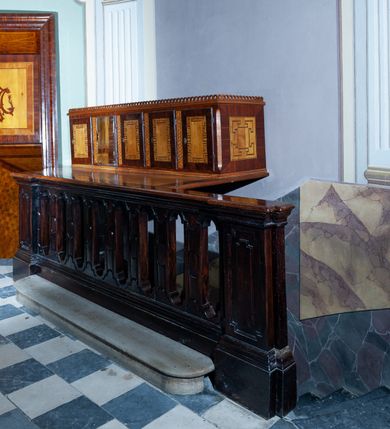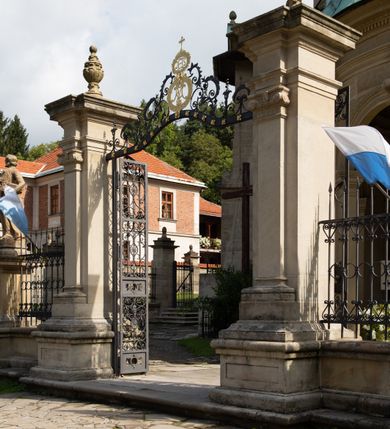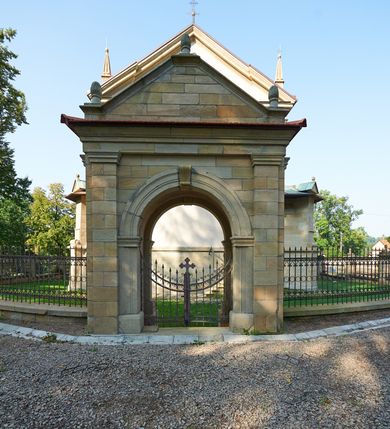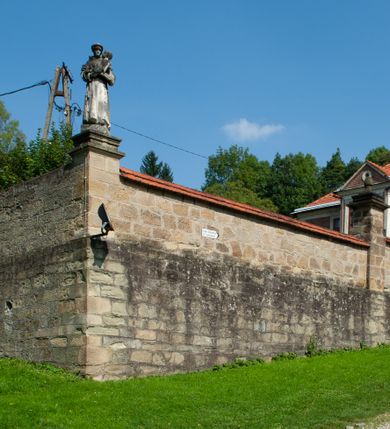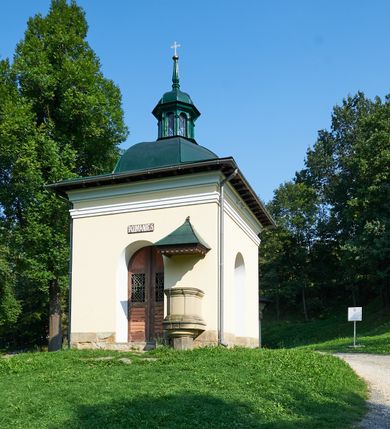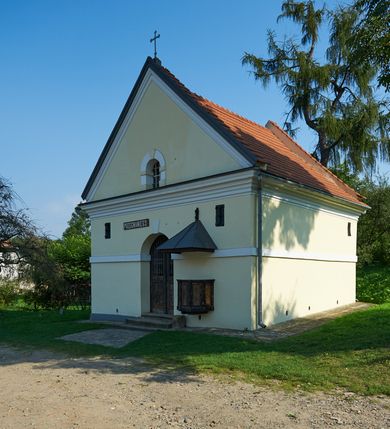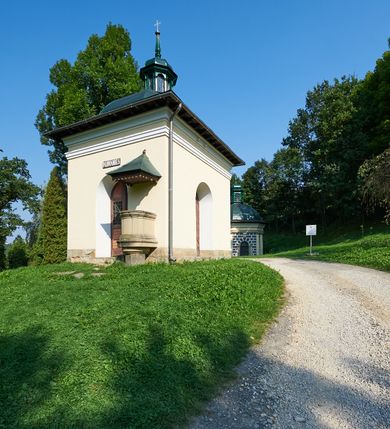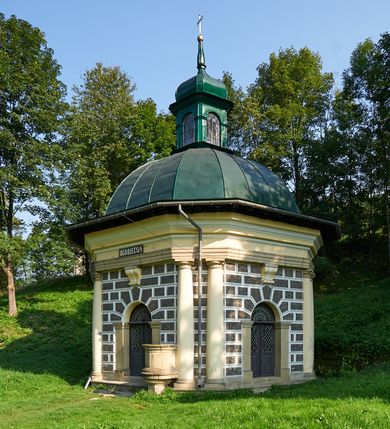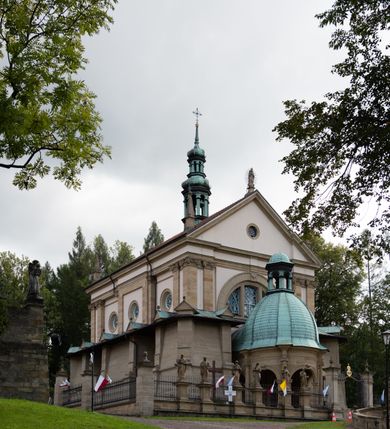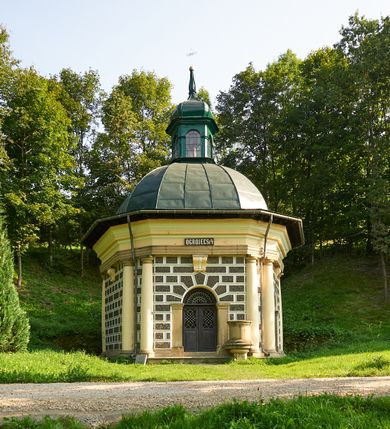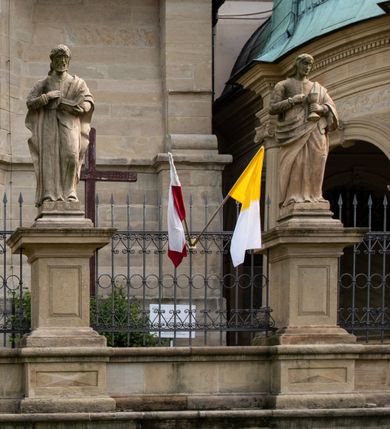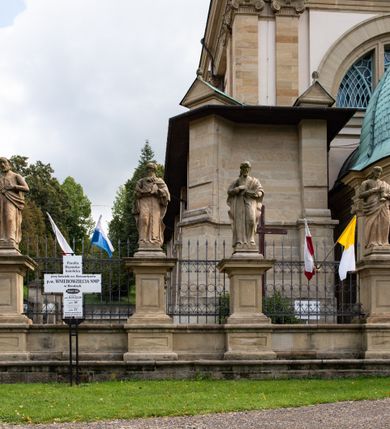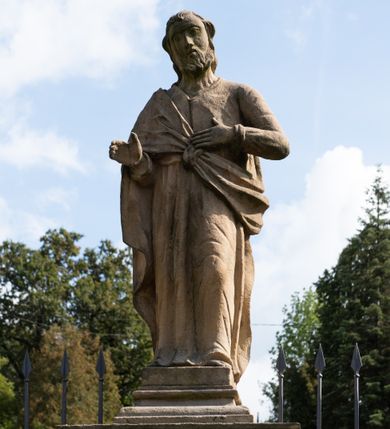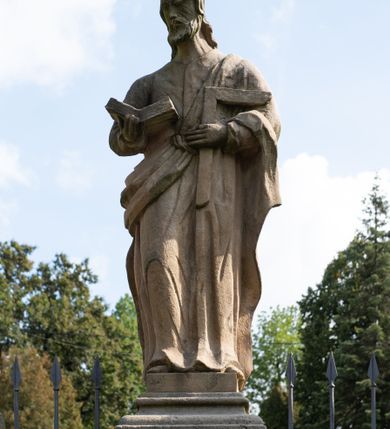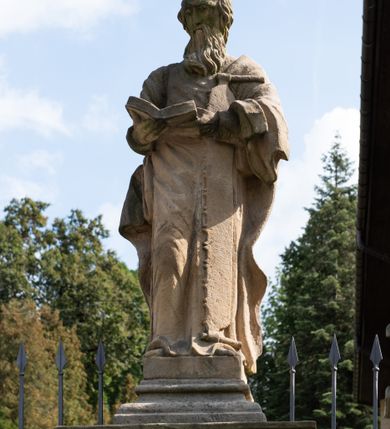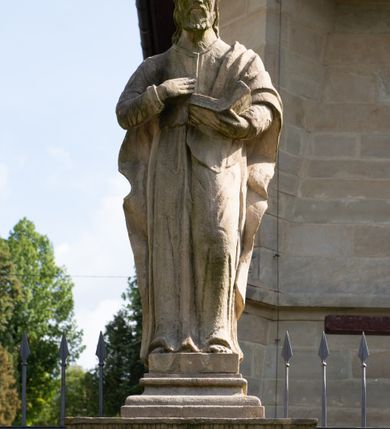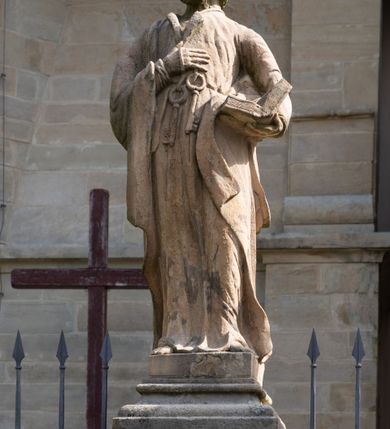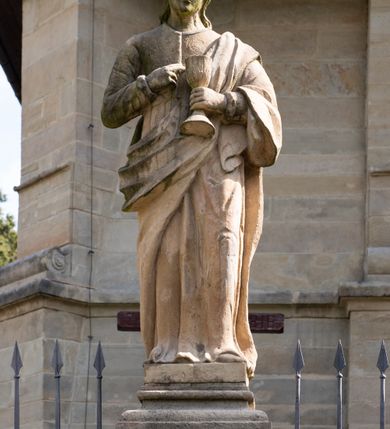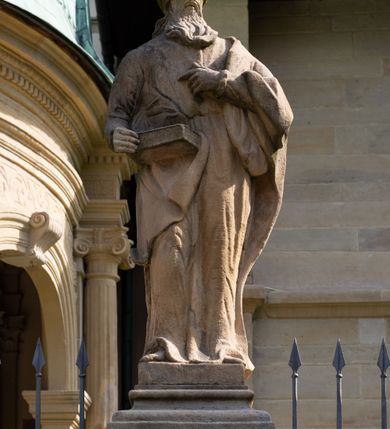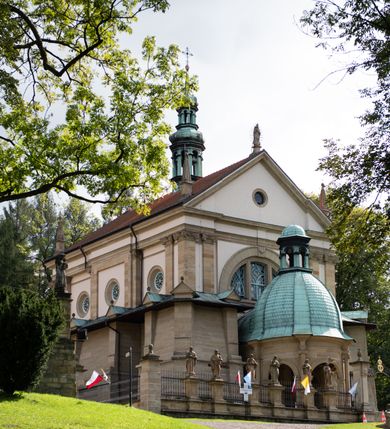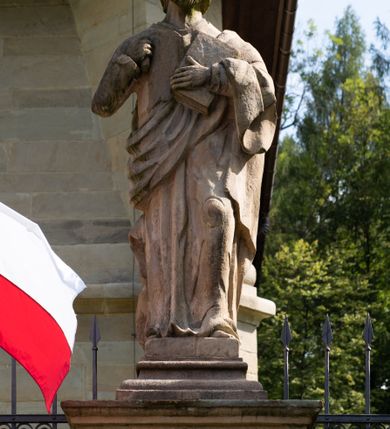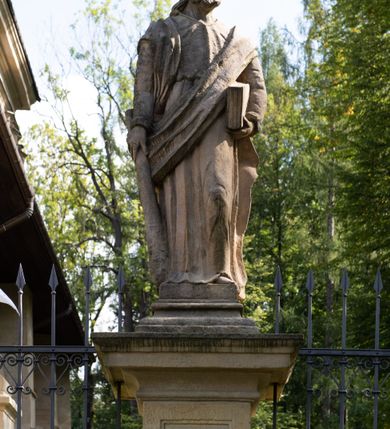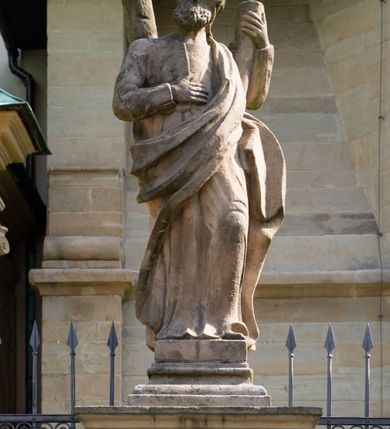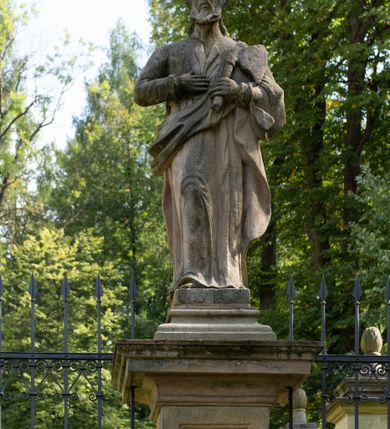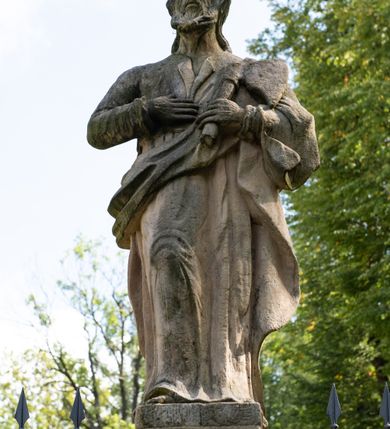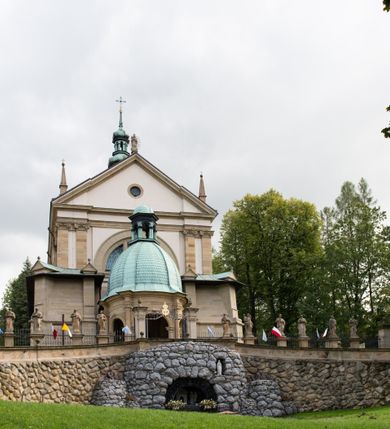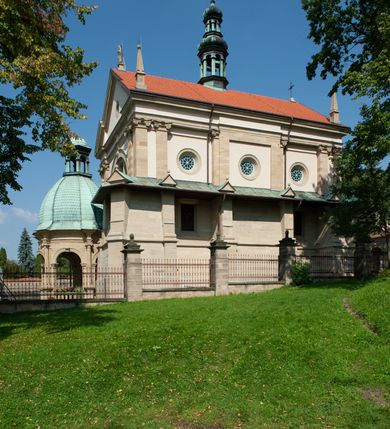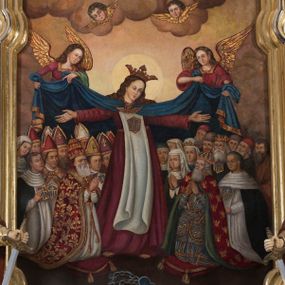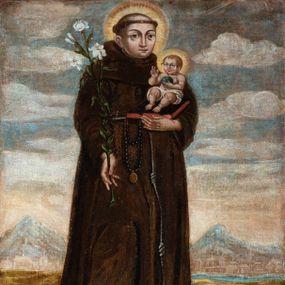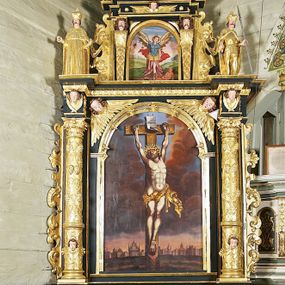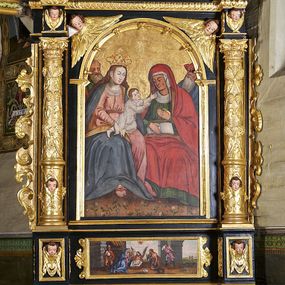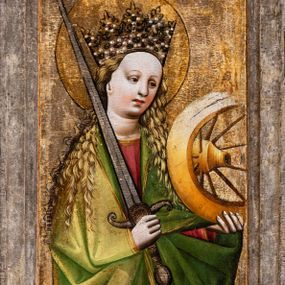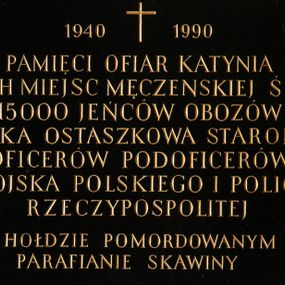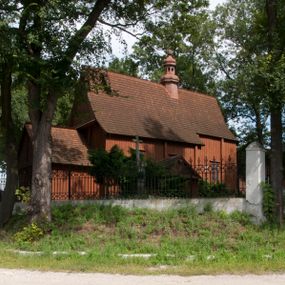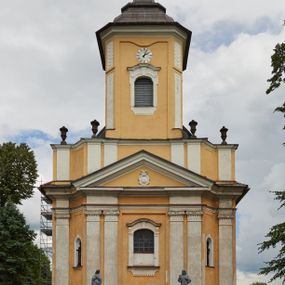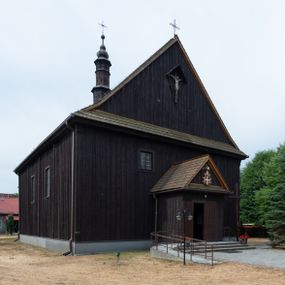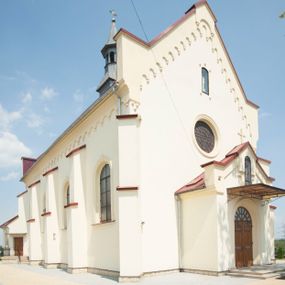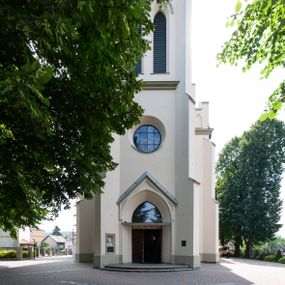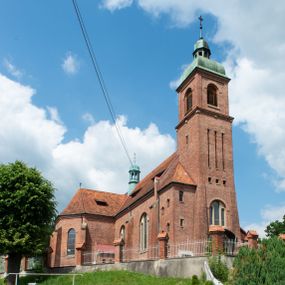
Church of the Assumption of the Blessed Virgin Mary in Brody
Place
Brody
Parish
Brody
Identifier
DZIELO/13975
Amount
1
Catalogue note author
Maria Działo
History of work
The history of the building is directly related to the creation of the Shrine of Christ's Passion in Kalwaria Zebrzydowska. The founder of the temple, Mikołaj Zebrzydowski, commissioned the measurement to Szczęsny Żebrowski in the Holy Land, who determined the distances between particular sacral objects and places. The Bernardine Monastery and the main church were designed by the Italian architect Giovanni Maria Bernardoni, and construction works were continued by the Flemish goldsmith and architect Paweł Baudarth. The artist also designed the chapel of the Tomb of the Virgin Mary. It was built at the foot of Lanckorona Mountain, in the area belonging to the village of Brody in 1611. The architectural structure of the building refers in its form to a sarcophagus with a groin vault, which was illuminated by one small window. Inside, there was a figure of the sleeping Virgin Mary, placed on a stone platform. However, in 1620, the founder of the temple died and the works were suspended. Construction was resumed by his son, Jan Zebrzydowski. Since the new temple was situated on wetlands, the foundations were supported by six stone buttresses. The construction was completed in 1623-1630. The Church of the Assumption of the Blessed Virgin Mary was consecrated by bishop Tomasz Oborski on 7 September 1642. In the following years, a new altar was erected in the chapel with the statue of Virgin Mary in the interior of the church. Subsequently, next to the temple, a wooden house was built for the monks, which was replaced by a brick one in the 19th century.
Currently, the temple's interior is primarily furnished with works made by a local carpenter and wood carver, monastic brother Jan Tuliński. Particularly unique is the high altar (designed by the monk as a monumental reredos), which is an expression of an expansive scenery, prepared for the organisation of large indulgence ceremonies at Kalwaria Zebrzydowska. It is not clear when the most valuable object was brought to the temple – the Ecce Homo painting, called Lord Jesus of Nazareth, painted in the 16th century. The image was placed in the northern side altar, where its copy is currently housed (the original image is located in the monastic oratory). At the beginning of the 19th century, the temple underwent a major modernisation. A marble floor was laid down inside and marble stairs were built outside, at the entrance to the temple. At the same time, statues of the twelve apostles were built on stone pedestals in front of the facade (1823). In 1870, Dydak Baturyna made a wall polychrome, which consists of compositions surrounded by eared, painted frames. Another general renovation of the temple was carried out only in 1909 on the initiative of Father Stefan Podworski residing by the chapel. The wall surrounding the temple was replaced by an iron fence. In addition, a wall with the grotto of Our Lady of Lourdes was built on the church square. The place was consecrated on 15 August 1911 by the suffragan bishop of Cracow, Anatol Nowak. The new house serving the needs of the monks taking care of the church was erected after 1980, also arranging rooms for the faithful, including a religious education room.
Abstract
The Church of the Assumption of the Blessed Virgin Mary in Brody belongs to a complex of paths devoted to Virgin Mary, located within the monastery in Kalwaria Zebrzydowska. The history of the building is directly related to the creation of the Shrine of Christ's Passion in Kalwaria Zebrzydowska. The church in Brody commemorates the Basilica in Jerusalem, in he Valley of Gethsemane, built in the place where the Mother of God was to be taken to heaven. This is a two-storey building – in its lower part there is a chapel built in 1611-1615, where genuine tomb "sepulchre" in the form of a sarcophagus is located. This is where the "via funebris" station is celebrated. The upper part of the building has a chapel (built in 1623-1630) with mostly baroque-classicist furnishings. "Via funebris" on the second floor passes smoothly into "via assumptionis," i.e. the Assumption of the Virgin Mary. The church in Brody was consecrated by bishop Tomasz Oborski on September 7, 1642.
Currently, the interior of the temple is primarily equipped with works that were made by a local carpenter and wood carver – monastic brother Jan Tuliński. Particularly unique is a high altar (which was designed by the monk as a monumental reredos), which is an expression of an expansive scenery, prepared for the organisation of large indulgence ceremonies at Kalwaria Zebrzydowska. It is not clear when the most valuable object was brought to the temple – the Ecce Homo painting, called Lord Jesus of Nazareth, painted in the 16th century. The image was placed in the northern side altar, where its copy is currently housed (the original image is located in the monastic oratory). At the beginning of the 19th century, the temple underwent a major modernisation. A marble floor was laid down inside and marble stairs were built outside, at the entrance to the temple. At the same time, statues of the twelve apostles were built on stone pedestals in front of the facade (1823). In 1870, in turn, Dydak Baturyna made a wall polychrome, which consists of compositions surrounded by eared, painted frames.
Persons related to work
Other works from this place
Other works from this year
Similar works
How to cite?
Maria Działo, "Church of the Assumption of the Blessed Virgin Mary in Brody", [in:] "The Sacred Lesser Poland Heritage", 2026, source: https://sdm.upjp2.edu.pl/en/works/church-of-the-assumption-of-the-blessed-virgin-mary-in-brody
